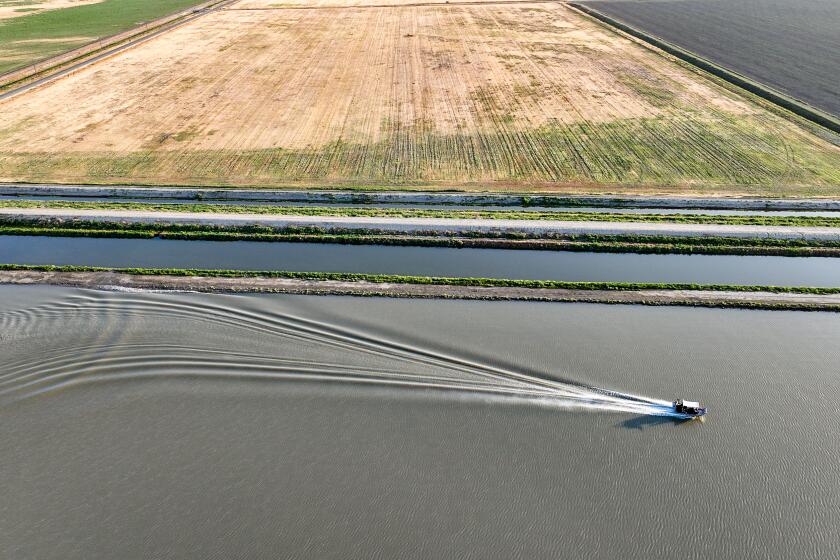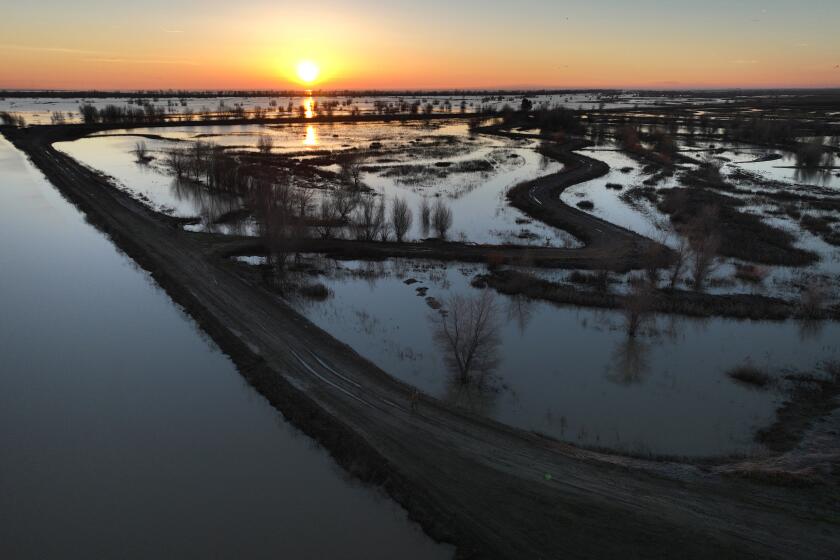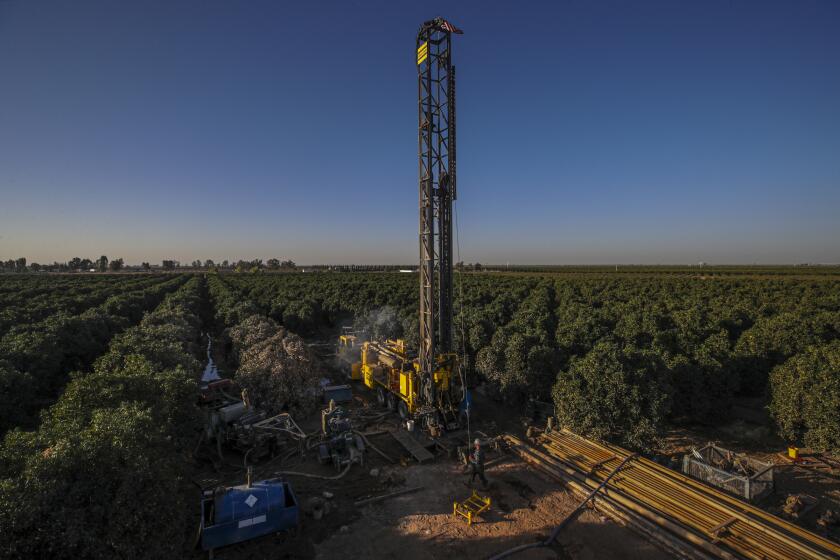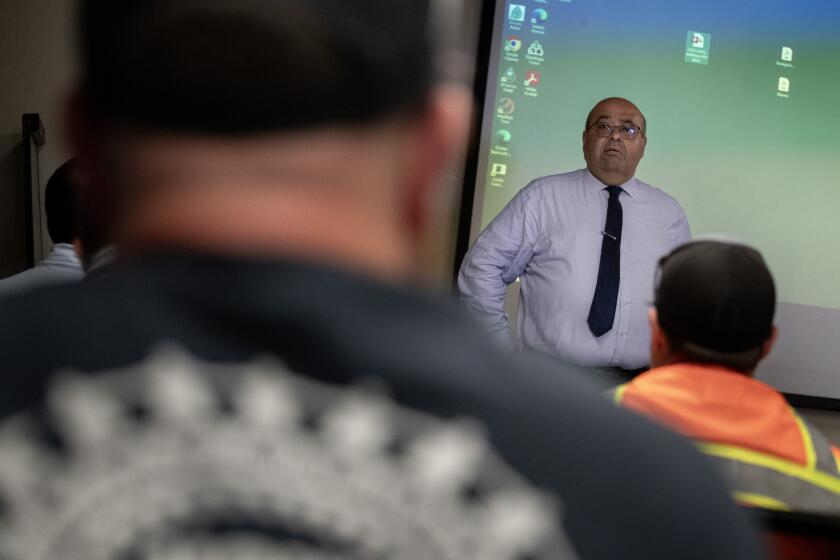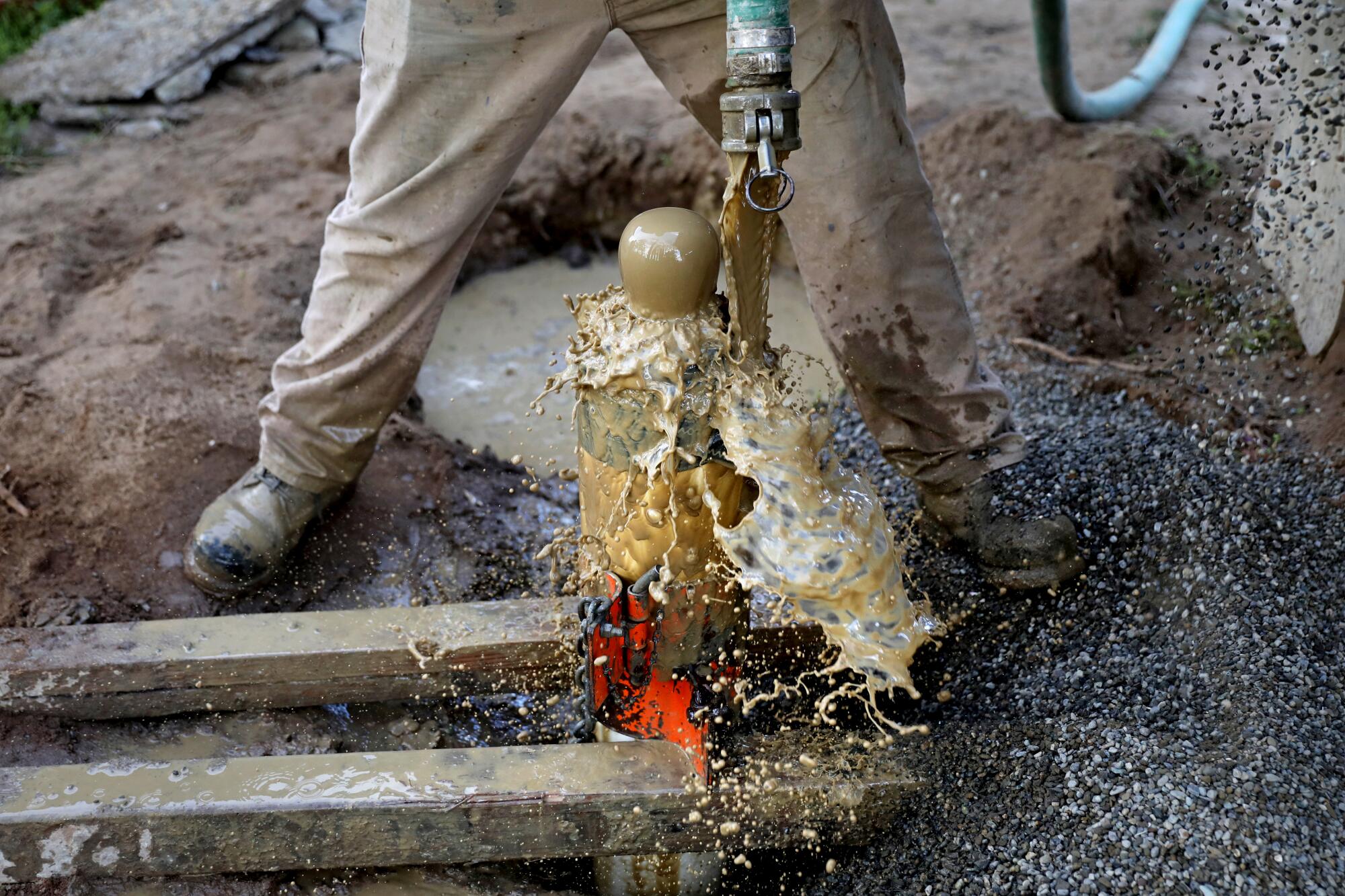
Over the past several years, California’s water managers have seen a pattern emerge in farming areas of the Central Valley: Even as declining groundwater levels have left thousands of residents with dry wells and caused the ground to sink, counties have continued granting permits for agricultural landowners to drill new wells and pump even more water.
A bill that was sponsored by the California Department of Water Resources sought to address these problems by prohibiting new high-capacity wells within a quarter-mile of a drinking water well or in areas where the land has been sinking because of overpumping.
Despite support from Gov. Gavin Newsom’s administration, the measure was narrowly rejected in the Senate last week after encountering opposition from the agriculture industry, business groups, local governments and water agencies.
Aggressive and impactful reporting on climate change, the environment, health and science.
The opposing organizations — which included the California Chamber of Commerce, the California Farm Bureau Federation and more than 30 other groups representing growers and water suppliers — said the bill was “too restrictive and may impede ways to achieve groundwater sustainability.”
Kristopher Anderson, a legislative advocate for the Assn. of California Water Agencies, told a Senate committee that the legislation would impose unworkable mandates and be “a blanket one-size-fits-all moratorium on approval of new wells that will harm local economies while failing to address these issues.”
After a brief debate, members of the Senate Natural Resources and Water Committee rejected the bill in a 5-4 vote.
Assemblymember Steve Bennett (D-Ventura), who introduced the bill, said it was intended to address a significant loophole in California’s groundwater law. The Sustainable Groundwater Management Act, passed in 2014, created local agencies tasked with developing plans for curbing overpumping in many areas of the state, but left counties in charge of issuing permits for new wells.
That has led to a situation where there are “more straws going in while they’re trying to regulate the current straws,” he said.
In some rural communities, farmworkers and other residents have seen their wells run dry soon after growers drilled new wells to irrigate crops on nearby fields.
“Too many counties have been unwilling to protect the most vulnerable people’s wells because they don’t want to take on the most powerful people, who want to keep putting high-capacity wells in,” Bennett said. “We’ve been trying to get people to do something about it, and they refuse. It is the state’s responsibility to finally say, enough is enough.”
In the San Joaquin Valley, 1,800 families rely on state-funded water deliveries to fill household tanks. The list of those waiting for fixes has been growing.
Parts of California have some of the fastest groundwater depletion rates in the world, and matters worsened during the last drought.
Scientists have also found that crops’ water demands are growing in the San Joaquin Valley because of rising temperatures driven by climate change, which is worsening the long-term water deficit.
In parts of the valley, falling water levels have caused the ground to sink at rates of more than half a foot per year. Land subsidence has required costly repairs of levees, canals and other infrastructure, with public agencies footing the bill.
“The counties that are approving the most high-capacity wells are the ones that have the most land subsidence in California,” Bennett said, referring to counties such as Tulare, Fresno and Kern. “It just does not make sense that we keep putting more — hundreds of new high-capacity wells — in areas that have significant land subsidence.”
Bennett has introduced similar legislation three times. He said the bill’s defeat this year means that “the status quo will reign,” allowing the drilling of more wells while land subsidence continues and water levels drop.
“A lot of families, particularly in the Central Valley, will have their wells go dry because we refused to take action,” he said.
The legislation was designed to bring permanent requirements similar to a 2022 temporary drought order issued by Newsom, which required counties and cities to secure verification from a local groundwater agency that permitting a new well wouldn’t be “inconsistent” with local plans. The order also called for agencies to issue a permit only after determining that additional pumping would not likely interfere with nearby wells or cause subsidence that would damage infrastructure.
In a recent report analyzing the effects of Newsom’s executive order, the Department of Water Resources said local agencies “took many approaches to gather relevant information on whether the issuance of a well permit could potentially interfere with nearby wells or contribute to land subsidence.”
But the report also concluded that the continued issuing of well permits in vulnerable areas, where other wells are at risk and the land has been sinking, indicate that in many respects the executive order “failed to achieve its goal.”
California’s water board has for the first time put a farming region on probation for failing to adopt measures to curb excessive pumping of groundwater.
The report said residents in parts of Fresno, Madera and Tulare counties told state officials they’re concerned the drilling of more agricultural wells is putting their drinking water at risk, and that pumping for farms “has been prioritized over domestic well users.”
Drawing on the goals of the governor’s order, state officials decided to sponsor legislation that would give firm direction to local agencies.
The bill was supported by leaders of advocacy groups such as the Community Water Center and Clean Water Action, who argued in a letter that as the situation stands, local agencies responsible for managing groundwater have no power to stop new wells from being drilled, resulting in an “unregulated race to the bottom.”
Those who spoke in favor of the bill during the Senate hearing included Paul Gosselin, the Department of Water Resources’ deputy director of sustainable water management. He pointed out that more than 3,000 domestic wells have run dry throughout California since 2020, according to reports submitted to the state.
“Over the years, those rates of subsidence and dry wells,” he said, have been “ramping up to new historic levels.”
He noted that during flooding last year, the state was forced to spend millions of dollars raising the levee that protects the city of Corcoran because the ground has sunk dramatically.
“It’s not a hypothetical problem we have. It’s a real-world problem facing people,” Gosselin told the senators.
California’s groundwater levels rose significantly in 2023, one of the wettest years in decades. State officials say efforts to replenish aquifers helped.
Gosselin called it a “drought resiliency bill” intended to complement the Sustainable Groundwater Management Act. That law required local agencies in many areas to develop groundwater plans and curb overpumping by 2040.
There were several exemptions in the bill, such as allowing for the drilling of a replacement well, and easing the prohibition on drilling within a quarter-mile of a domestic well if there is a local ordinance aimed at preventing new wells from interfering with existing wells.
But that wasn’t enough to convince opponents. Fresno County supervisors called the bill an “attempt to fundamentally redirect groundwater management” from the original intent of the state’s law. A group of local agency managers called the California Groundwater Coalition said the proposal would add “burdensome requirements.”
Gosselin said the debate over the legislation brought a “good exchange of ideas.”
“The votes weren’t there to keep the bill going,” he said. “We’re hoping the dialogue and the issues that we raised in the legislation will continue.”
The Department of Water Resources is continuing to pursue other related efforts, including working with local agencies on drought plans and preparing a document outlining “best management practices” for curbing subsidence, he said.
Gosselin said state officials will continue to work with counties and local groundwater sustainability agencies to improve decisions on issuing permits for new wells to “hopefully avoid this continued cycle of increasing dry wells during drought periods.”
Groundwater depletion is worsening in many of the world’s farming regions. But a global study also found that some efforts are helping to boost aquifers.
Experts shared differing opinions about the legislation.
“I think it’s critically important,” said Jay Famiglietti, a hydrologist and professor at Arizona State University’s School of Sustainability. Without this type of legislative change, he said, “it allows the continued drilling of deep wells that pump a tremendous amount of water.”
“So in addition to sustainability being at risk, we’ll see more and more shallower wells go dry,” Famiglietti said.
Behind the opposition to the bill, Famiglietti said there seems to be a “concerted effort” to drill more wells and delay restrictions. He called the opposition by the agriculture industry shortsighted.
“The state cannot achieve its sustainability goals without leadership from the agricultural industry,” he said. “We want food sustainability, and we need that water to grow food for generations to come.”
A pair of agricultural groups, the Community Alliance with Family Farmers and the California Climate and Agriculture Network, supported the bill.
Ruth Dahlquist-Willard, interim director of the University of California’s Sustainable Agriculture Research and Education Program, said some sort of policy intervention is needed, but “this type of ‘one size fits all’ approach usually hurts small farms, who have fewer resources to adapt to new policies and go through additional regulatory hurdles.”
If a well goes dry on a small farm, under the bill that farm would be treated the same as a large corporation or a hedge fund when trying to replace the well, she said.
Dahlquist-Willard said she hopes if similar legislation is proposed again, it will include protections for small farms.


